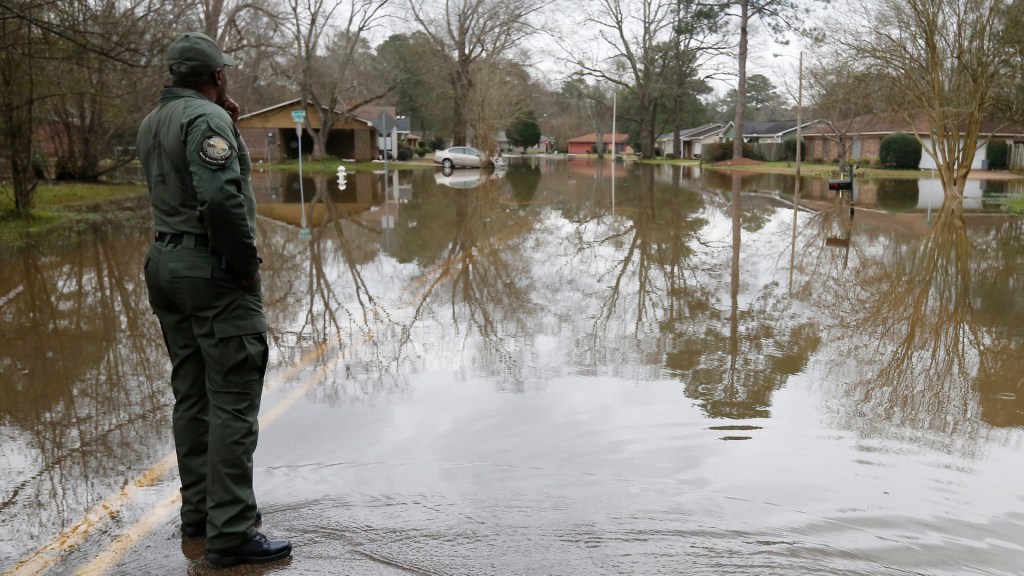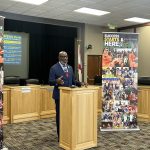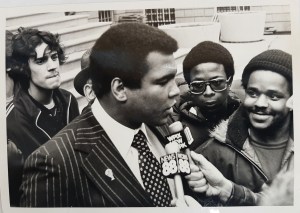By LaTricea D. Adams
Word In Black
This summer, we witnessed weather transform from a mere inconvenience to a nationwide crisis in our Black communities. What was once a hot day or heavy rain now poses a direct threat to our health — particularly for our elderly, child-birthing people, pregnant mothers, and children — and it places a strain on our finances.

Photo: AP Photo/Rogelio V. Solis
The Biden Administration has taken significant steps in the right direction, but the urgency of our situation demands more. The stakes are high, and the time is now for all of us to continue demanding more, pushing for stronger protections, and developing solutions within our communities. We cannot just prepare for the next heatwave, flood, or hurricane; we must be ready to overcome the extreme-weather impacts. But this is not just about weather — it’s about systemic inequities that leave Black neighborhoods more vulnerable to climate disasters and less likely to receive adequate support in their aftermath.
As a young Black environmental activist and founder of Young, Gifted and Green, I’m here to sound the alarm about the devastating impact that extreme weather has had on our communities this year, especially in Michigan, Georgia, and Pennsylvania. The scorching temperatures and flooding we faced were particularly disruptive for our elders and the most vulnerable. I also want to offer solutions that can provide a way out of what seems impossible.
The toll of climate change
In Michigan, the heart of Detroit faced catastrophic flooding. Houses that have stood for generations were suddenly filled with water, destroying belongings and displacing families. In Georgia, scorching heat waves made daily life unbearable, with older adults and children suffering the most. Meanwhile, Pennsylvania saw a terrifying mix of floods and heat, hitting communities like Philadelphia with a double whammy of climate chaos.
What happens in these states, all home to significant Black populations, highlights a grim reality: our communities are often hit first and worst by extreme weather.
This isn’t a coincidence. It’s the result of decades of underinvestment, environmental racism, and economic disparities. We’re talking about poor infrastructure, limited green spaces, and homes less likely to have air conditioning or proper insulation. When disasters strike, our neighborhoods often lack the resources to recover quickly, if at all.
The impact of the inflation reduction act
So, what can be done to address this? Let’s start with the Inflation Reduction Act at the federal level. This landmark new law, pushed through by the Biden-Harris administration, includes much-needed funding for climate resilience and infrastructure improvements. Across the country, communities are benefitting from the $369 billion in historic climate and clean-energy investments. These investments will help retrofit homes, improve energy efficiency, and support renewable energy projects — crucial for Black communities, which are more likely to consist of older, energy-inefficient homes and apartments.
The IRA also includes disaster preparedness and response funding, ensuring that communities have the resources to withstand extreme weather. But here’s the kicker: for these funds to make a real difference, they must be equitably distributed. Too often, federal aid bypasses the most vulnerable in favor of those with a safety net. We must ensure that Black communities are front and center in these initiatives.
But we can’t wait for the federal government to fix everything. Grassroots action, especially at the state and local levels, is equally essential.
In Michigan, Young, Gifted and Green’s Flint Youth Environmental Justice Council is training youth on civic engagement and community service grounded in the environmental justice principles. Another organization providing solutions includes the Detroit Black Community Food Security Network, which works to build sustainable urban agriculture, ensuring that residents have access to fresh, affordable food even in times of crisis. They also advocate for better flood management systems and infrastructure improvements to prevent future disasters.
In Georgia, community cooling centers have become a lifeline. Churches, schools, and community centers are opening their doors, providing a haven from the oppressive heat. These centers offer physical relief while fostering a sense of solidarity and mutual aid. Meanwhile, advocacy groups are pushing for better enforcement of environmental regulations to protect vulnerable neighborhoods from industrial pollution and its exacerbating effects on climate change.
Pennsylvania’s Black communities are organizing around resilience, too. In Philadelphia, initiatives like the Philly Thrive movement fight for clean air and environmental justice. They’re demanding that the city invest in green infrastructure, such as parks and community gardens. These spaces can mitigate the impacts of extreme weather. The spaces help manage stormwater and provide crucial cooling effects during heat waves.
Community resilience and the power of voting
Education and advocacy are critical components of community resilience. We must empower our communities with the knowledge and tools to advocate for their rights and demand action from local officials. Workshops on disaster preparedness, energy efficiency, and environmental justice can make a significant difference. When we understand the systems at play, we can better navigate and challenge them. This is our power, our voice, and our right to demand a better future for our communities.
On a broader scale, voting remains one of our most powerful tools. Climate change is a political issue, and the leaders we elect directly impact our ability to address it. We must support candidates who prioritize climate justice and are committed to equitable solutions. This means voting in both national and local elections, where decisions about infrastructure, zoning, and community resources are made. Your vote is not just a mark on a ballot; it’s a powerful tool that shapes the future of our communities.
Moreover, businesses and entrepreneurs in our communities can play a pivotal role. Investing in renewable energy projects, sustainable agriculture, and green building practices can create jobs and build resilience. Black-owned businesses, in particular, can lead the way in fostering a more sustainable and equitable future.
A call to action
The extreme weather of 2024 is a wake-up call, a stark reminder that climate change is here and hitting Black communities hard. But it’s also a call to action. By leveraging federal resources like the Inflation Reduction Act, working at the grassroots level, and voting for leaders committed to climate change and environmental justice, we can build resilience and protect our communities.
The fight for climate justice is inseparable from the fight for equal justice. We must continue to stand together, advocate for our rights, and build a future where our communities not only survive but thrive, creating better futures for all.
This article was originally published by Word In Black.
The post Summer 2024: From weather extremes to solutions appeared first on AFRO American Newspapers.











